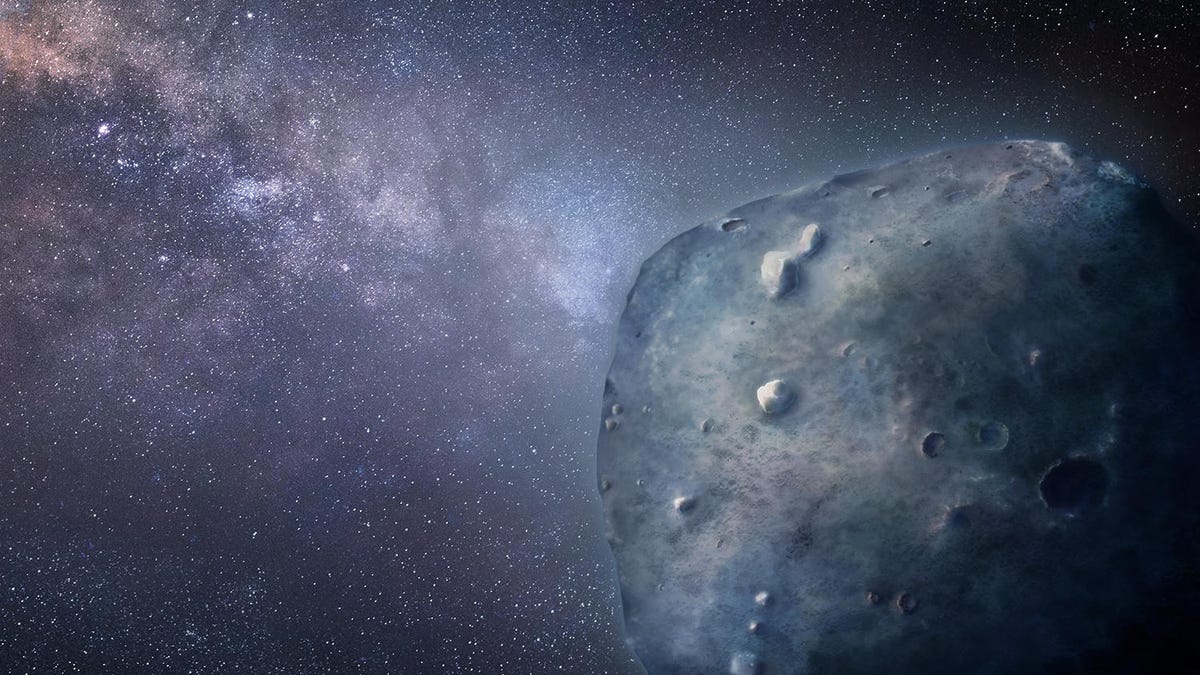A look at 3200 Phaethon: A big, bizarre, blue asteroid we plan to visit
New research suggests the "rock comet" is weirder than previously thought.

An artistic impression of the asteroid 3200 Phaethon.
It could be the strangest asteroid in our celestial neighborhood.
Named 3200 Phaethon, the 5-kilometer-wide (3.1-mile) space rock is one of the few asteroids responsible for a meteor shower, it makes unusually close passes by the sun as it orbits and it's also an unusual color.
"It's a weird blue asteroid that created the Geminids and gets so hot that metals on the surface turn to goo," Teddy Kareta, a graduate student at the University of Arizona, told reporters Tuesday. He was speaking at the 50th annual meeting of the American Astronomical Society Division for Planetary Sciences in Knoxville, Tennessee.
Kareta led an international team of researchers who investigated the odd asteroid, which sometimes behaves like a comet by releasing a dusty tail when it passes close to the sun, earning it the nickname the "rock comet." He says they found it to be even more enigmatic than expected.
"Even though Phaethon's highly eccentric orbit should scream 'dead comet,' it's hard to say whether Phaethon is more like an asteroid or more like a dead comet."
He said they discovered Phaethon is darker with a more uniform surface than previously thought, findings the team hopes will be useful for the Japanese Space Agency's planned Destiny Plus mission to the object in the next decade.
Phaethon was discovered to be the source of the Geminid meteor shower in 1983. Before then, it was thought that only comets could be the source of meteor showers. And It's one of very few blue asteroids. Most space rocks and comets tend to be more gray or red. Its eccentric orbit around the sun also means it reaches temperatures exceeding 1,500 degrees Fahrenheit (800 Celsius).
In preparation for the launch of Destiny Plus, currently set for 2022 with arrival at the asteroid around 2025, Kareta hopes to be able to study a few known fragments of Phaethon to unlock the mysteries of its weirdness.
NASA turns 60: The space agency has taken humanity farther than anyone else, and it has plans to go further.
Crowd Control: A crowdsourced science fiction novel written by CNET readers.

